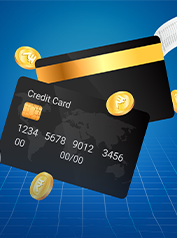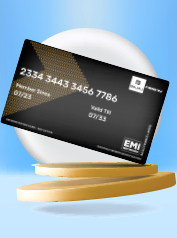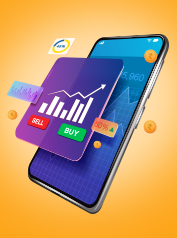
Fund transfers in India rely on the Indian Financial System Code (IFSC) system. To understand what is an IFSC code, consider how each bank branch receives a unique 11-digit alphanumeric identifier to streamline transactions. The code ensures the smooth processing of online transactions made through National Electronic Fund Transfer (NEFT), Real-Time Gross Settlement (RTGS), and Immediate Payment Service (IMPS).
The IFSC is assigned by the Reserve Bank of India (RBI) to each individual bank branch. It remains unchanged unless the bank goes through a merger.
Fund transfers cannot be initiated unless the unique IFSC is added along with the beneficiary’s account number. The key features of the IFSC code are as follows:
Helps identify a specific bank branch
Eliminates errors when initiating fund transfer
Aids smooth payment through electronic payment options such as NEFT, IMPS and RTGS
Put simply, the IFSC system enables the RBI to track and maintain all financial transactions that are processed through RTGS, IMPS, and NEFT.
The IFSC code is listed at the top of the cheque leaf near the bank account number. To break down the code, the first 4 characters signify the name of the bank, while the last 6 characters (either numeric or alphabetical) represent the specific branch. If you're unsure, you can perform an IFSC code search on your bank's website or through the RBI portal.
The IFSC enables you to conveniently carry out fund transfers through a hassle-free process. The code acts as a key component when making transfers from one account to another.
Here are two methods you can use for the same:
Leading NBFCs and banks have dedicated apps on Google Play Store and Apple Appstore that one can use to initiate the e-transfer of funds. Follow the below-mentioned steps to transfer funds using the IFSC through your mobile banking app:
Download your bank’s official mobile banking app
Enter your credentials, such as customer ID/username and password to login
Choose the option for fund transfer, i.e. IMPS, NEFT, or RTGS
Enter the beneficiary’s bank account number, name, and IFSC along with other details, as requested
Once the beneficiary account is linked to your account, you will be allowed to initiate the fund transfer using IFSC
If you’re unsure of the IFSC, you can use an IFSC code finder available on most banking apps or websites.
The SMS mode too can be used to initiate the e-transfer of funds. However, the service is limited to a few banks and NBFCs. Check with your financial institution before you undertake fund transfer via SMS.
Follow the below given steps to use the IFSC and facilitate e-transfer of funds via SMS:
Link your bank account with your mobile number by registering your phone number with your banking institution.
To register your mobile number, you will have to fill a form. The bank will then send you a ‘Starter Kit’ that includes the MMID and mPin. MMID stands for Mobile Money Identifier, i.e. a 7-digit unique number and mPIN stands for Mobile Banking PIN, i.e. a 4-digit password.
Once the number is registered, create the SMS by typing ‘IMPS’ and the beneficiary details. The beneficiary details include the recipient’s name, account number, IFSC code, and the sum of the fund transfer. IMPS stands for Immediate Mobile Payment Service and depicts the transfer method that you are using.
Confirm the transaction by entering the mPIN. The mPIN is the one given by your bank with the ‘Starter Kit’.
Press ‘OK’ to transfer the funds to the beneficiary account.
Fortunately, there is no need to worry even if you provide the wrong IFSC code while initiating an electronic fund transfer. This is because you also provide the beneficiary’s account number. In case you provide the incorrect IFSC code, the system will automatically detect the error while cross-referencing the provided name and account number. In this case, the money will be refunded to your bank account and get reflected within a few hours.
Many people confuse the IFSC code used for bank branches with the one used for credit card payments. However, they serve different purposes.
A bank branch’s IFSC code varies by location. For instance, a branch in Mumbai will have a different IFSC code than one in Nashik.
In contrast, the credit card IFSC code for a bank remains the same across all branches. Regardless of which branch issued the credit card, the IFSC code used for NEFT payments towards that card will be uniform.
Here is a table that points out the various ways in which the two differ:
Areas of differentiation |
Bank Branch IFSC Code |
Credit Card IFSC Code |
|---|---|---|
Variance |
Varies from branch to branch |
Stays uniform throughout the country |
Use |
Used by a bank account holder when they have to transfer funds into another bank account |
Used to pay credit card bills |
Location |
Any of the documents issued by the bank to an account holder, such as statement, cheque book, and passbook, among others |
Can be obtained from the instruction manual that comes in the envelope containing the credit card or through the customer service executive representing the credit card department of the bank |
Acceptable mode of payment while utilising the code |
NEFT, RTGS, and/or IMPS |
Only NEFT |
Every IFSC code that is issued by RBI to a bank branch follows a specific format and each portion of the same holds a different meaning.
Below is a table that contains the breakdown of the bank IFSC code format:
Portion of the code |
Meaning |
|---|---|
First 4 alphabets |
Name of the bank |
The “0” that may be found in the middle of the IFSC code |
Does not mean anything. It acts like an empty space that could be filled in the future |
Last digits |
Code assigned by the RBI to a particular branch of a bank |
IFSC codes are crucial for transferring money between bank accounts. To complete a transaction, the sender must provide the recipient’s name, account number, and the correct IFSC code.
Once submitted, the payment is processed quickly and routed to the intended bank branch. In most cases, the funds are credited to the beneficiary’s account within minutes. The IFSC code ensures that money reaches the right person, at the right place, without delays or errors.
Having understood the role of IFSC codes, let’s now look at another important code used in banking, especially for cheque-based transactions. This is the Magnetic Ink Character Recognition (MICR) code.
A Magnetic Ink Character Recognition (MICR) code is a 9-digit code used to validate cheques and the banks involved in processing them. It ensures that the financial institutions participating in such transactions are recognised by the Reserve Bank of India (RBI).
You may be asked to provide a MICR code when submitting documents for financial instruments such as investment portfolios or mutual funds—whether through lump sum investments or Systematic Investment Plans (SIPs).
Unlike an IFSC code, which is alphanumeric, the MICR code is numeric and usually printed at the bottom left corner of a cheque. It works like a barcode for banks but is readable by both machines and the human eye.
Just like the IFSC code, each part of a MICR code has a specific meaning. The table below explains the structure and significance of each section of the code.
Portions of the code in question |
Meaning |
|---|---|
First 3 digits |
Code of the city in which the branch in question is located. They are aligned with the first 3 codes that are found on the postal address of a city. |
The 3 digits in the middle |
Code assigned to a particular bank by the RBI |
The 3 digits found at the end of an MICR code |
It is a code assigned by RBI to a particular branch of a bank |
You can find both the IFSC code and MICR code printed on a standard bank cheque. Here’s how to identify them:
The MICR code is usually printed at the bottom of the cheque. This section typically contains three sets of numbers, and the second set is the MICR code. It is printed using magnetic ink and helps banks process cheques efficiently.
The IFSC code is found near the top left corner of the cheque, just below the bank’s logo. It identifies the specific branch that issued the cheque book.
Knowing where these codes are located is essential for filling out banking forms or initiating fund transfers and cheque-based transactions.
IFSC stands for Indian Financial System Code.
No, a NEFT payment cannot be reversed once initiated.
No, the IFSC code is not the same as the branch code. The IFSC code comprises eleven characters and helps identify a bank’s branch. The branch code, on the other hand, is part of the IFSC code.
No, the IFSC code does not change even if the location of the bank branch changes. It remains the same. An IFSC would only change when a bank goes through a merger.
A bank IFSC code helps make money transfers using RTGS, NEFT, and IMPS methods. The credit card IFSC code, on the other hand, enables NEFT payments for credit cards. Note that while the IFSC changes from one branch to another for different banks, the credit card IFSC code remains unchanged.
No, you cannot get the IFSC code through the savings bank account number.
Yes, as per the RBI guidelines, all banks must print the home branch IFSC code on the passbook.
Academy by Bajaj Markets












